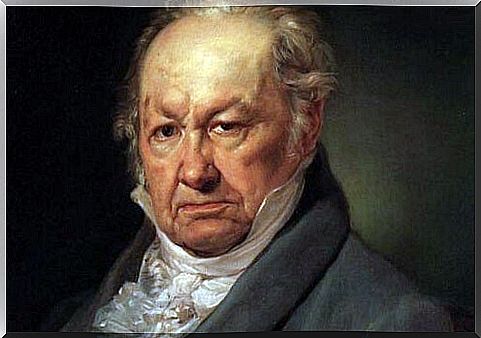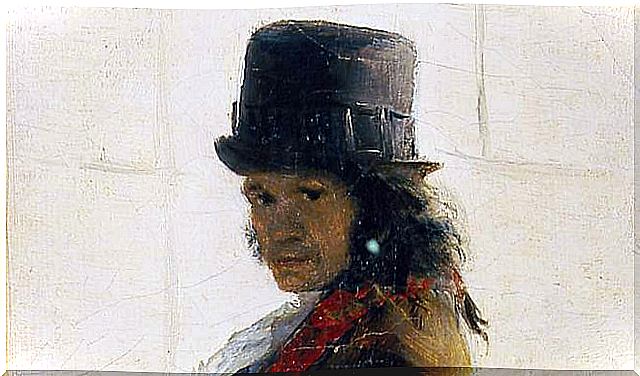Susac Syndrome, The Disease Suffered By Goya

Francisco de Goya was 46 years old when his life changed completely. In his head, suddenly, appeared the noise, the embarrassment and the clear assurance that he was losing his sanity. After two years of convalescence in Cádiz, he had some sequels, the most evident being his deafness. To date, a series of investigations affirm that the origin of this condition was not syphilis, but Susac syndrome.
Coincidence or bad fortune, what Francisco de Goya suffered gave way to one of his most representative and productive pictorial stages: his black series. Gone is that artistic period where his paintings used to be relaxed, detailed and bright. After the disease, he crossed a threshold into a more pessimistic and introspective universe that he combined with the historical period in which he lived.
He had to leave the Royal Academy of Fine Arts of San Fernando because of deafness, and after that departure, his hands and his mind turned to a job where reality became distorted, dark and even grotesque. His imagination and mastery knew no limits, even conditioned by illness. That which according to current experts had nothing to do with venereal infections, the inhalation of chemicals from their paints or thrombosis.
Now, the hypothesis is that Francisco de Goya suffered what is known as Susac syndrome, an autoimmune disease that coincides with the complex symptoms suffered by our illustrious Aragonese genius and teacher.

Susac syndrome and Francisco de Goya
The story goes that in 1819 Francisco de Goya retired to a country house known as the ‘Quinta del deado’. Here he began a series of murals that would later be called the ‘black paintings’. At this time, not only had he lost his hearing, but he also had some vision problems, dizziness, and notable mood swings.
A few years ago, experts believed that what could have made the Aragonese teacher sick was exposure to lead. The white paint in his works contained a high amount of this component and its excessive inhalation is commonly associated with these symptoms. Now, in 2017 an interesting study appeared that revealed a new opinion.
The work has been carried out by Dr. Rona Hertzano, from the University of Maryland (Baltimore, United States) and published by New Scientist magazine . In this study the following is pointed out: Francisco de Goya suffered from Cusac syndrome and this ailment is what explains the evident fact that his art became darker, darker and even grotesque.
What is Susac syndrome?
Susac syndrome is a rare disease originating from the central nervous system. It is an immune disease that occurs with what is known as a clinical triad. Is the next:
- An encephalopathy-
- Visual problems.
- Hearing problems.
The origin is in a vascular problem, they are small infarcts that appear in several arteries of the brain, the retina and in the inner ear. On average, it usually begins with recurrent migraines until at some point, the patient falls into a coma. Once the person leaves this state, there are usually sequelae, such as a visual deficit, deafness, hallucinations, behavioral disturbances, memory loss, etc.
On the other hand, something important should be noted: Susac syndrome can be cured. With a treatment based on corticosteroids it usually remits.

A disease that enhanced his genius
Every year a medical event known as the Historical Clinicopathological Conference is held. The objective is to challenge a scientist to diagnose the ailments of a famous and historical patient. It was done a few years ago with Charles Darwin and two years ago the protagonist was Francisco de Goya.
Dr. Hertzano gave evidence of the famous painter’s possible autoimmune disease, which would explain his deafness, the change in his character, the hallucinations and that artistic style that shaped Goya’s so-called black age. Once again, the presence of a disease was associated as the cause of that singular style that often defines many artists.
An example of this would be Vincent Van Gogh with his bipolar disorder or Edvard Munch and Emily Dickinson with their respective depressions. Now, the Susac syndrome was not the exclusive cause by which Goya derived in that somber and gloomy style. It was a combination of factors, such as the age in which he lived.
That Spain at war where executions and torture were common, where greed and emptiness slipped through, was quite in tune with that darkness that inhabited himself because of his deafness. That change in his style was avant-garde and unknowingly laid the foundations of contemporary painting. His illness could have been treated without problems today, but perhaps, had he cured his deafness, we would not have those works that are now universal pieces in our history.
Sometimes things happen just the way they should be.









